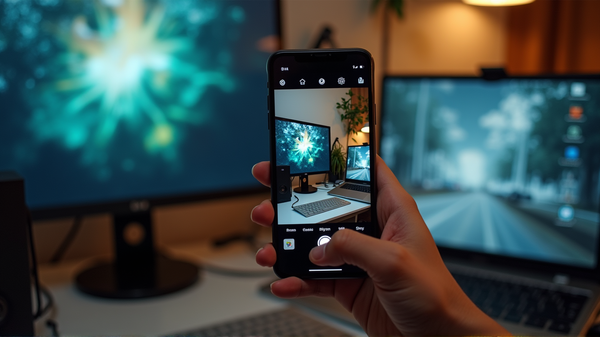Revolutionary Self-Diagnosis Feature Coming to Android 15: Diagnose and Troubleshoot Your Smartphone Without a Service Center Visit
With the upcoming release of Android 15, users are set to experience a groundbreaking feature that allows them to diagnose and troubleshoot issues with their smartphones independently, without the need for a visit to a service center. This exciting development was recently reported by techradar.com.
A New Era of Smartphone Self-Diagnosis
Android 15's new self-diagnosis feature is poised to revolutionize the way users interact with and maintain their devices. By providing tools that were previously only available to technicians, Android 15 empowers users to take control of their smartphone's health. The feature offers two primary modes:
- Component Check Mode: This mode allows users to perform manual tests and check the status of various components, including the battery and memory.
- Assessment Mode: This mode enables the use of one device to assess the condition of another, providing a comprehensive evaluation without needing specialized equipment.
Delving Deeper into Device Health
While current Android smartphones offer basic battery status information, the new self-diagnosis feature goes much further. Users can now perform manual tests to check the functionality of various components such as the display and touchscreen response. Moreover, this feature provides detailed data about the memory chip's condition, warning users about potential data loss or insufficient storage space.
Enhanced Diagnostic Capabilities
The introduction of these advanced diagnostic tools means that users can now preemptively identify issues before they become critical. Whether it's a battery that's starting to degrade or a memory chip that's reaching its limit, the new self-diagnosis feature provides timely alerts and recommendations. This proactive approach can significantly extend the lifespan of a device by ensuring that minor issues are addressed promptly.
Practical Applications and User Benefits
Imagine being able to run a comprehensive diagnostic on your smartphone from the comfort of your home. This capability not only saves time and money but also reduces the need for unnecessary trips to the service center. For many users, particularly those in remote areas, this feature can be a game-changer. It democratizes access to technical knowledge, allowing anyone to become their own tech support.
Technical Details and User Interface
The new feature is designed to be user-friendly, with a simple interface that guides users through the diagnostic process. Upon launching the self-diagnosis app, users are presented with clear options for either manual testing or full device assessment. Each test comes with detailed instructions, ensuring that even those with limited technical expertise can perform them effectively.
Battery and Memory Checks
In the Component Check Mode, users can conduct detailed battery tests that go beyond the usual status indicators. They can measure battery capacity, charge cycles, and overall health. Memory tests provide insights into the chip's performance, helping users manage storage more effectively and avoid potential data loss.
Display and Touchscreen Diagnostics
Screen-related issues are some of the most common problems faced by smartphone users. With Android 15's self-diagnosis feature, users can perform tests to ensure their display is functioning correctly. This includes checking for dead pixels, screen brightness, and color accuracy. Additionally, touchscreen diagnostics help identify any issues with touch sensitivity and responsiveness, ensuring the device operates smoothly.
Memory Chip Status and Data Safety
The new feature's ability to monitor the memory chip's health is particularly valuable. It can detect early signs of memory failure, such as slower read/write speeds or frequent data errors. By providing warnings about potential data loss, users can take preemptive measures to back up their data, ensuring their valuable information remains safe.
Looking Ahead: Future Updates and Enhancements
While the current iteration of the self-diagnosis feature is already impressive, there are plans for future updates that will expand its capabilities even further. Upcoming versions may include additional tests for other components, such as the camera and sensors, providing an even more comprehensive diagnostic toolkit.
Compatibility and Rollout
As for compatibility, the feature will be available on a wide range of devices that support Android 15. A list of smartphones eligible for the update has already been published, indicating broad support across various brands and models. This inclusivity ensures that as many users as possible can benefit from this innovative feature.
Conclusion: Empowering Users Through Technology
The introduction of Android 15's self-diagnosis feature marks a significant step forward in smartphone maintenance and user empowerment. By providing powerful diagnostic tools directly to users, Android is helping to create a more informed and proactive user base. This not only enhances the user experience but also contributes to the overall longevity and performance of smartphones.
Stay tuned for the official release of Android 15 and explore the new self-diagnosis feature that will transform the way you maintain and care for your device.




